
We’re in the season of patched up scarecrows and stitched together monsters, and, less spooky, patched throw pillows.
I added a new ticking stripe throw pillow to our couch a few weeks ago, which has been lovely for lounging with, but which also threw into relief the threadbare corners of the pillows it joined. Our older cases all date from when Faye was a baby—two in plain canvas and one in striped linen. Through seven years of use as fort walls and nursing props and pillow fight battering rams, they’ve held up remarkably well, but like so many things in my home over the past year, they’ve started to show the signs of wear.
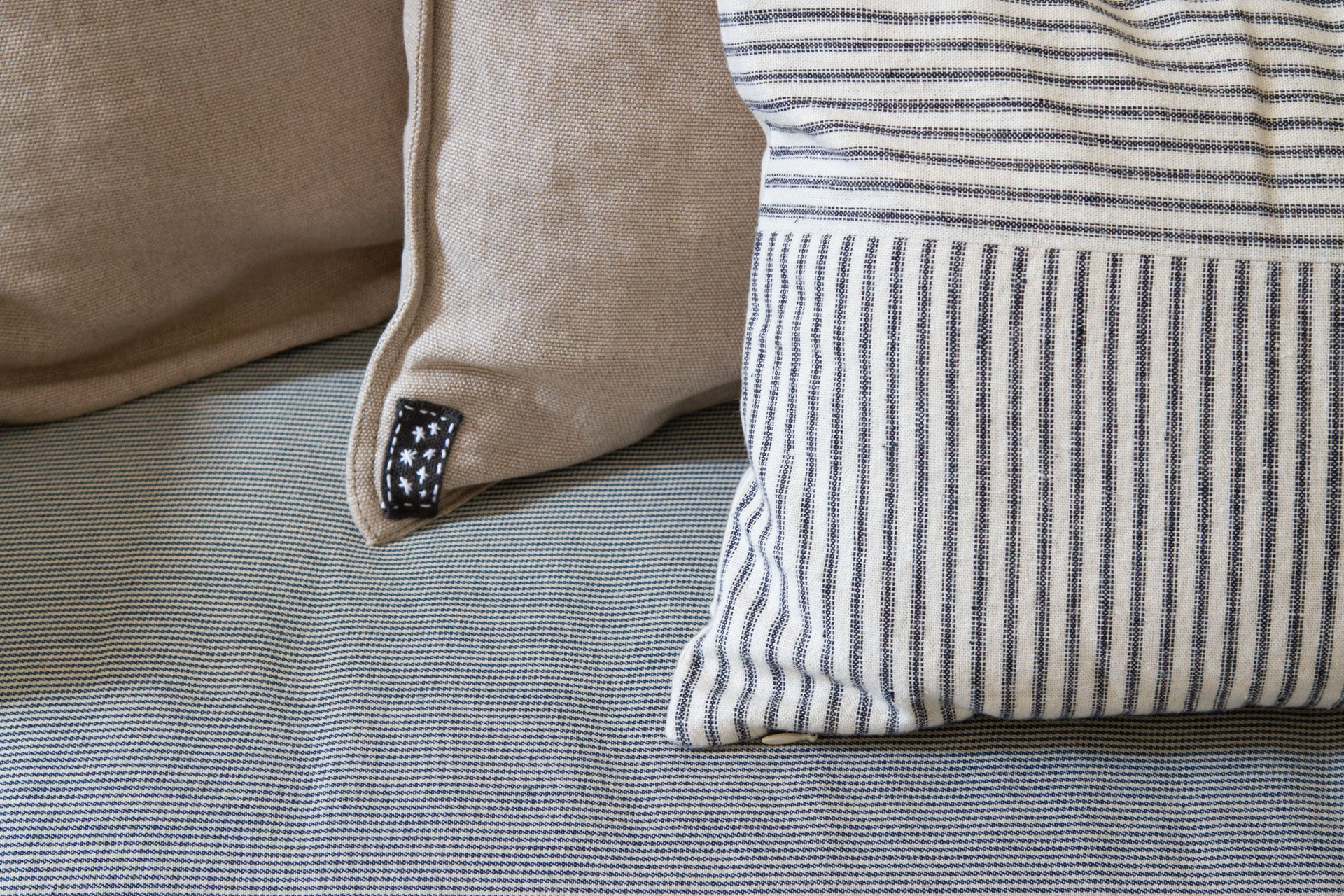
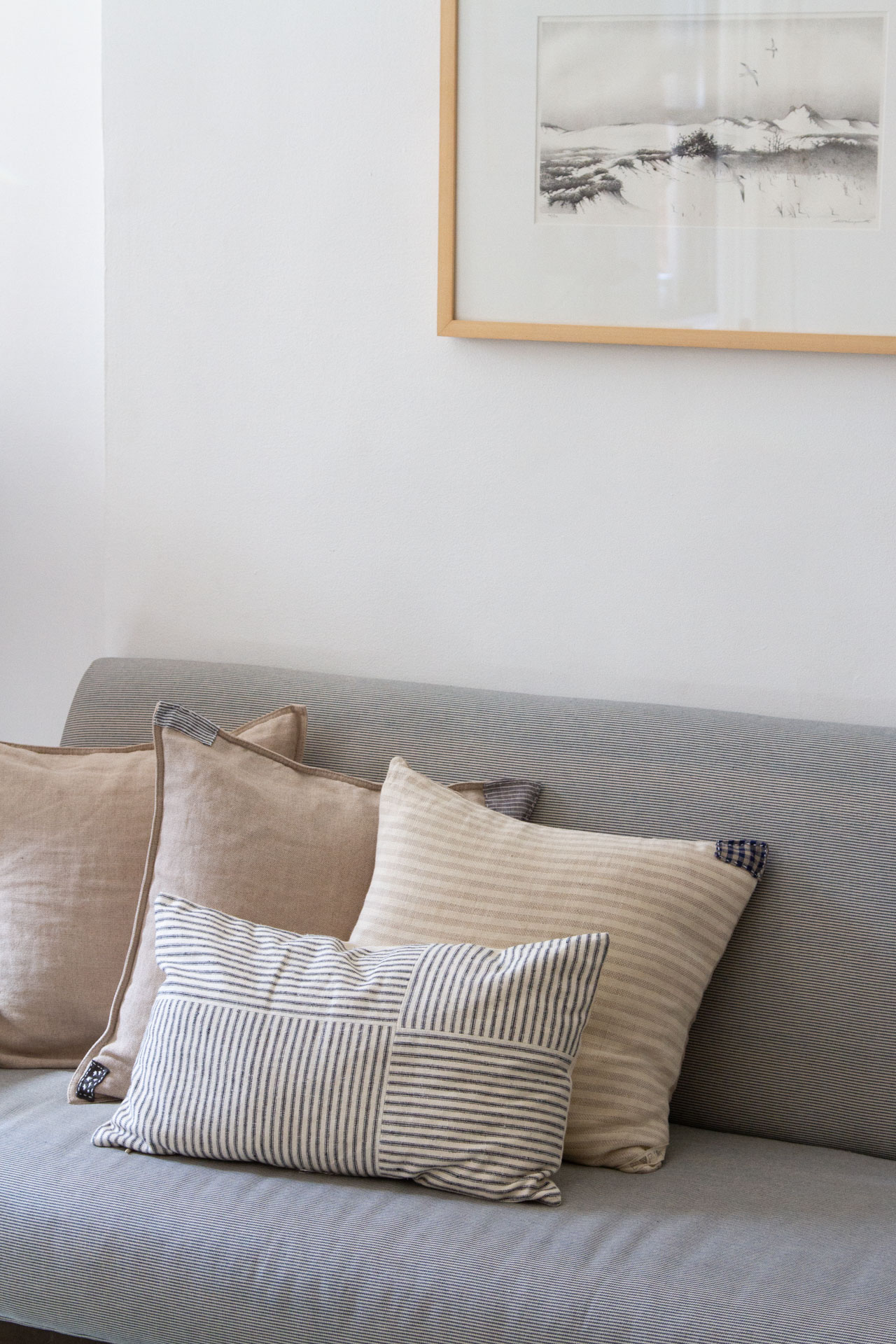
So when a box full of fabric remnants for a different project arrived from Fog Linen recently, I got immediately to work adding patches to my pillows. I first tried my hand at machine sewing the patches, but my machine balked at having to go through so many of layers of fabric at once and I didn’t feel like deconstructing and reconstructing the pillows in their entirety.
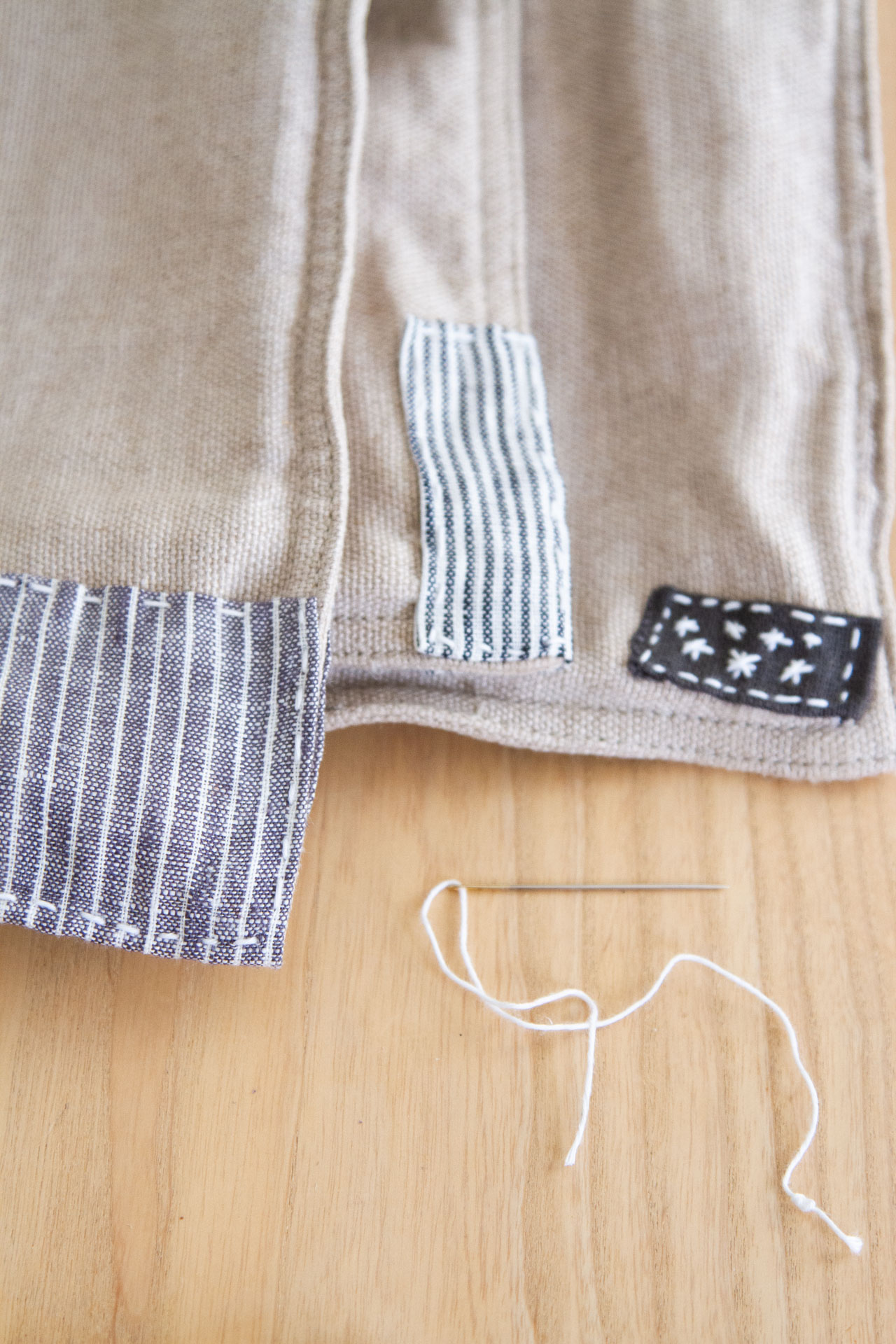
Instead, I picked up the sashiko needle and thread Katrina Rodabaugh sent my way with her delightful book last spring and got to work by hand, patching my threadbare corners over the course of an evening. I’ve rarely been so pleased with a small improvement.
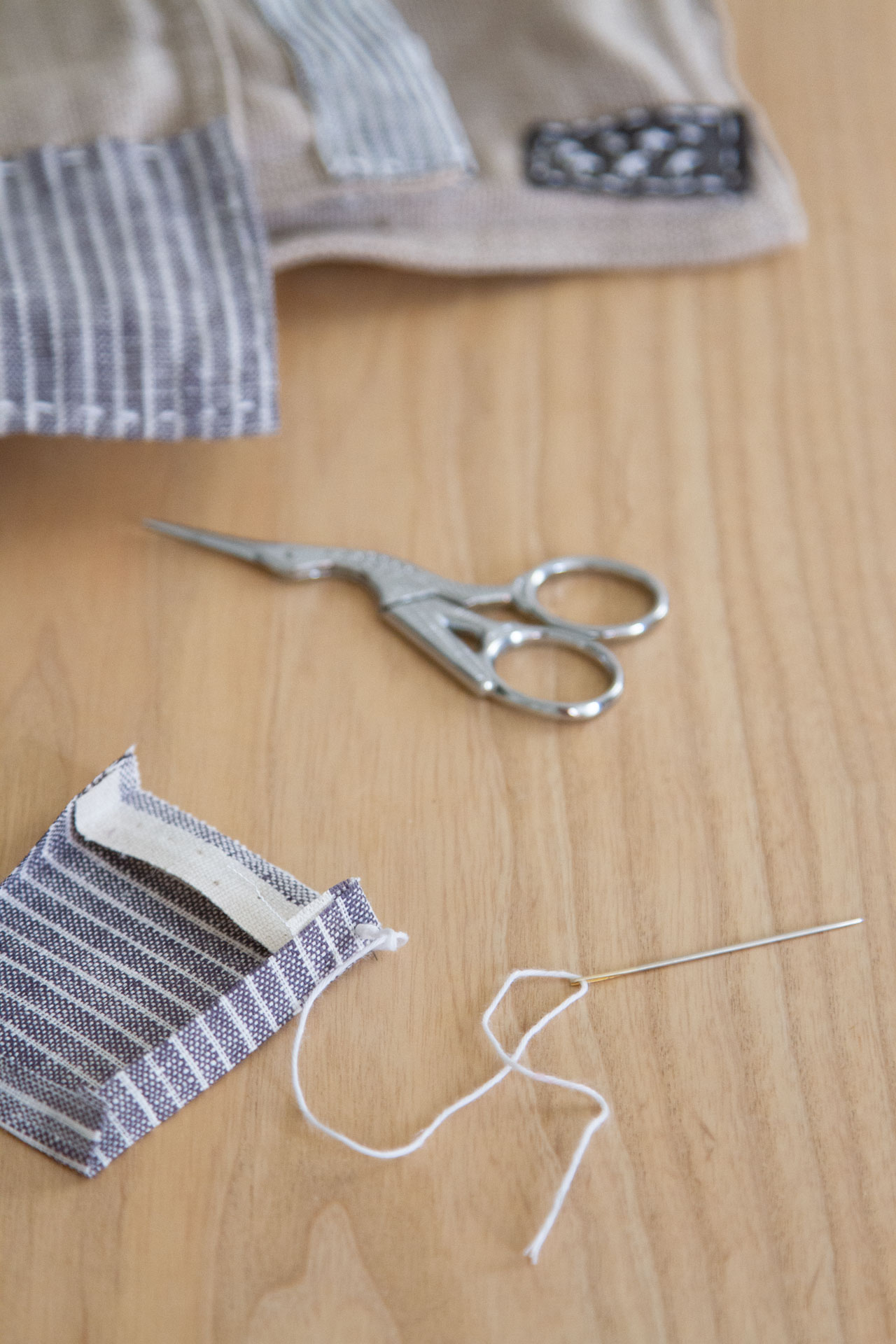
I appreciate a throw pillow’s usefulness and I’m not so much of an ascetic as to deny myself some basic comfort, but I’m not usually drawn to throw pillows as decorative items. I don’t collect them or swap them in or out seasonally. I’m not someone to follow (or offer) the common directive of regularly zhushing up a couch with new pillows and so while I do love our new pillow, the patched up counterparts offer something that all new replacement pillows never could have. All patched up, there’s something about the reinforced corners that feels comforting and, dare I say, human. Maybe I’ve finally lost it, but it’s reassuring to see something turn more lovely thanks to its age and a little effort. Overnight my plain throw pillows have become more interesting and more my own, each patch a little signifier of thrift and resourcefulness and simple, honest work.

For the curious:
My new patchwork asymmetrical ticking stripe pillow case in ticking stripe was a gift to me from Toast.
For anyone in need, Fog Linen sells fabric remnants in large and small bundles that are helpful for lots of things and patches in particular. For anyone needing inspiration in the form of Japanese textiles and tradition, Fog Linen’s own Yumiko Sekine’s book Simplicity at Home is gorgeous.
For anyone needing more details on the mending, Make Thrift Mend is clothing-specific but endlessly inspirational and applicable all over the home.
This post includes affiliate links. Reading My Tea Leaves might earn a small commission on the goods purchased through those links.


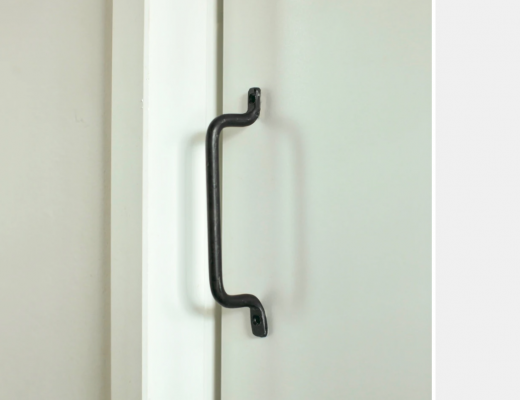
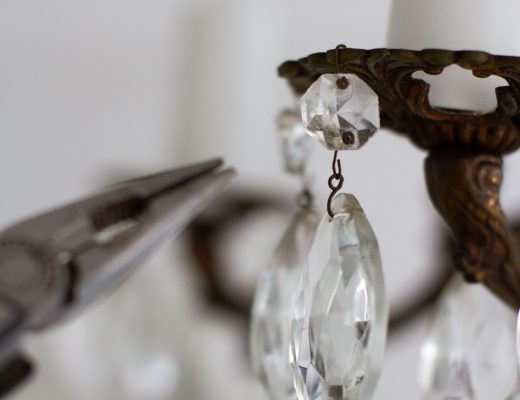
12 Comments
I love this! Such a great repair solution.
What you’re describing here is the essence of the Japanese aesthetic of wabi-sabi! The beauty of the well-loved, well-used, perfectly imperfect.
I am such a fan of visible mending for all the reasons– to make things last, to make them *mine*, to show care by tending to much loved items. We adopted a puppy in March who has a particular desire to EAT ALL THE THINGS, and my throw pillows have been the most common target. I just finished up some patches like these a couple of weeks ago and am loving them so it was such a joy to see you doing the same. Mending is such a lovely past time and I love that more folks are getting on the bandwagon!
luv ticking stripe…classic and modern all at once…
I had no idea Fog Linen sold fragments!! Adding linen patching and crafting to the cozy winter project list!
You haven’t lost it, definitely reassuring! They look lovely and personal
The stripes are so cute! We balanced by investing in a couple new covers from Saffron Marigold. . .and filling with the same extremely worn throw pillows I “inherited” from my college roommates 10+ years ago. Oh, and I suppose we also have a couple throws that came with a Craigslist couch bought a decade ago, too. Really dig the different interpretations on “use what you have” we’ve got going on!
A wabi-sabi aesthetic indeed <3
These are so beautiful . Thank you for sharing 🙂
Hi Erin! If we’re just getting started with mending, do you recommend Katrina’s first book? Or is it fine to dive in with the second? Thanks!
Apologies for my long delay here! I only have her second book so can’t speak so much to the first but I think it might cover more basics and might be a good spot to begin!
wow, simple and good wabi-sabi style, love it @Erin
Comments are moderated.